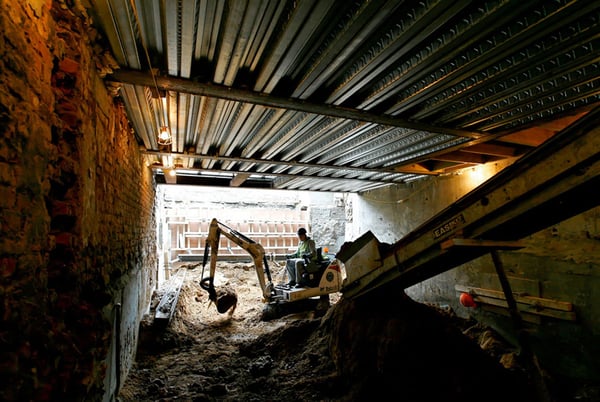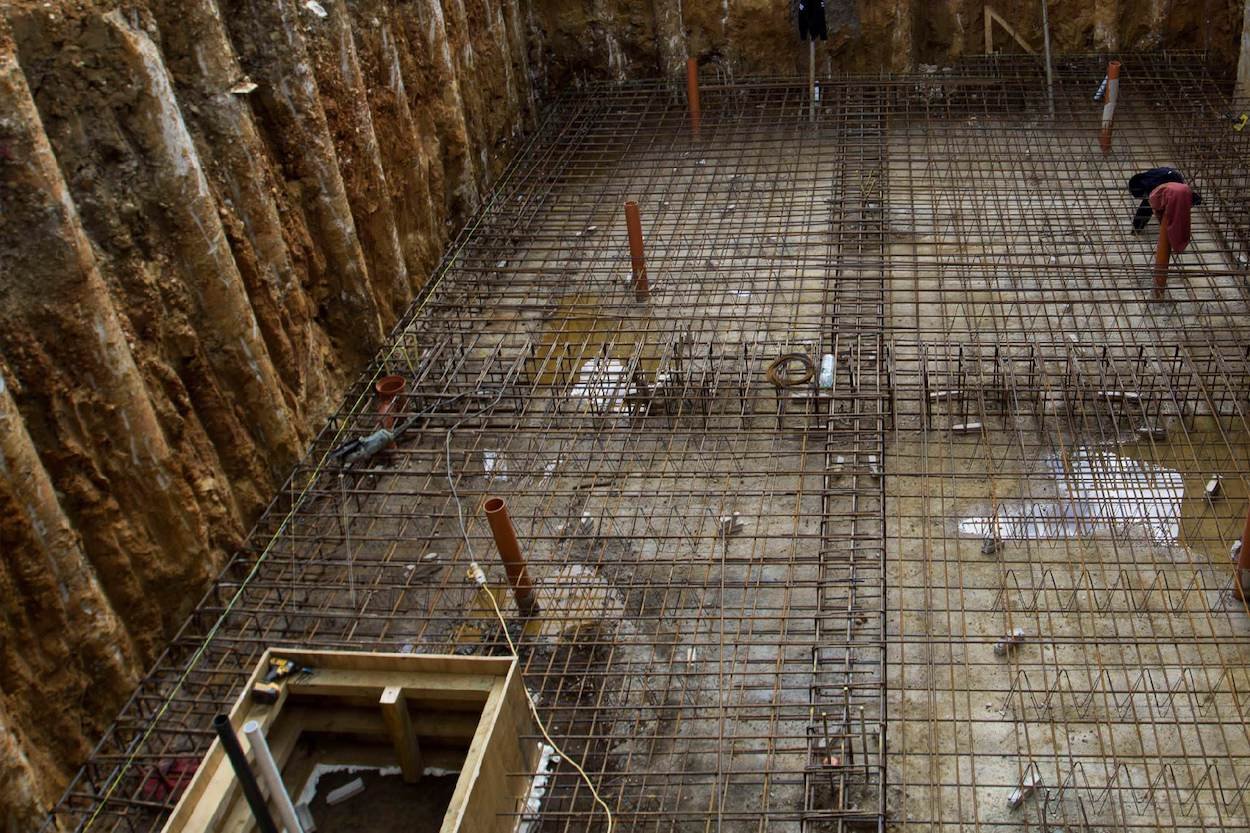Basement excavations and conveyor belts: A match made in heaven.

Down is the new up! As housing prices in the capital continue to skyrocket, basement excavations have more than tripled in London since 2008. If you’re amongst the many homeowners ‘digging’ this new way of life, then you’ll appreciate the inevitable conundrum of seeing what lies beneath; “How do I remove all that soil and dirt!?”

Image source: Raumplan house and garden, Dublin, Ireland designed by John Feely Architects. Photograph: Alamy
Yes, digging deep into the abyss of underground living comes with the inexorable challenge of removing large quantities of rubble and aggregates. When faced with removing many cubic metres of soil, a spade and wheelbarrow simply won’t cut it! Such a labour intensive approach is going to slow down the excavation process and cause some very achy arms. So, what do you do when you want to efficiently remove large amounts of soil and rubble quickly? You rely on a conveyor belt!
Let’s take a look at what makes Shifta Conveyor belts so great and why a basement excavation is not complete without one.

Image source: ArkiteXture
First things first, like all machines, the beauty is that they do not need rest, feeding or copious amounts of cups of tea. They work at a click of a button all day long! However, unlike other machinery, such as vehicles used to carry debris which spend half of their operational time travelling empty after depositing a load, the Shifta Conveyor belt is productive all day long! Thanks to its continuous loading surface, the conveyor belt provides an endless loop of carrying medium. So you can concentrate on the next stage of your excavation project whilst the machine is left to tackle the dirt.

Image source: ABTECH Basement Systems
Burrowing underground typically involves working in confined spaces. Often, larger machinery such as diggers cannot access these awkward areas and so you may resort to manually removing dirt and soil. Ducking and diving underneath structural foundations and delicately stepping around any underpinning work can make you feel like you’ve completed the world record for the most amount of squats! Not to mention, be extremely time consuming…
With the Shifta Conveyor belt however, working in complex environments is easy! The compact size ensures ultimate flexibility and versatility, allowing access to areas where space is tight. Should you need to work around corners, the conveyor belts can be linked together to create a continuous flow to the length that you require. These adjustments can be altered as the work progresses. In more complex working environments, conveyor belts can be positioned strategically to avoid interfering with other work happening on site, such as scaffolding etc. This ensures maximum operational efficiency during your basement excavation.
Depending on the size of space you’re working in, you have the option to choose from three sizes; 5.4 metres, 4.4 metres, 3.2 metres. To help with different loads you can select from 2 widths; 450mm and 300mm. So whatever the load of your soil and rubble, you can shift it in a jiff!
-3.jpeg?width=670&name=0%20(1)-3.jpeg)
What goes down must come back up. As you tunnel deeper underground, at some point, all that dirt and rubble has to find its way back to the surface and into the back of a truck for quick and easy disposal. Laying down a plank of wood as a ramp and then wheelbarrowing it out one load at a time is a very ineffective method of removing the soil.
The Shifta Conveyor belt offers a more practical solution and can be positioned with a steep incline. Loads can be taken on a gradient of up to 45-50 degrees which allows you to work on challenging terrains where other machines would not be able to cope with the differing levels of land.

However, with a Shifta Conveyor Belt comes less staff participating in potentially dangerous activities and strenuous working conditions. As a result, health and safety concerns are diminished and the project can be completed with minimal headaches.